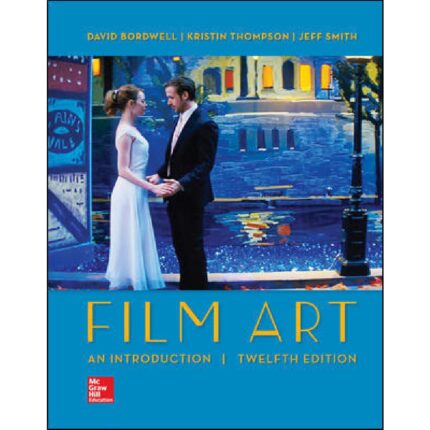The Art Of Watching Films 9th Edition By Dennis Petrie – Test Bank
Chapter 11
The Director’s Style
1. A director’s cut refers to
A. the version of a film shown in theaters during its original theatrical release.
B. a re-released film on video or in theaters that reinserts footage that the director believes should never have been cut when the film was first distributed.
C. the version of the film assembled after it is cut by the Ratings Administration.
D. the international version of a film when it is substantially different from the domestic release.
Accessibility: Keyboard Navigation
2. In the context of filmmaking, which of the following is a special editing technique?
A. Tinting
B. Mickey Mousing
C. Toning
D. Dialogue overlaps
Accessibility: Keyboard Navigation
3. In the context of cinematography, which of the following is an accurate description of an “objective camera?”
A. A camera that mimics the physical actions of one of the characters the film
B. A camera that focuses on capturing the emotional reactions of the characters
C. A camera that views the action of a character in the film as a remote spectator
D. A camera that views the scene from the visual or emotional point of view of a participant
Accessibility: Keyboard Navigation
4. In the context of cinematography, which of the following can be used to view a scene from the visual or emotional point of view of a participant?
A. Continuity editing
B. A subjective camera
C. Director’s cut
D. An objective camera
Accessibility: Keyboard Navigation
5. The first consideration in analyzing visual style is
A. composition.
B. narrative structure.
C. choice of subject matter.
D. set design.
Accessibility: Keyboard Navigation
6. Woody Allen’s film Interiors
A. was adored by audiences because it delivered what they wanted—a Woody Allen story in the vein of his most popular works, like Annie Hall.
B. seemed like mimicry of his own well-worn thematic and visual style; it bored audiences.
C. was a change from his popular style and persona and was not well received by audiences.
D. None of the answers is correct.
Accessibility: Keyboard Navigation
7. Ridley Scott’s film Blade Runner is
A. an example of the director filming subject matter outside of his comfort zone.
B. one of the most drastically changed films for a director’s cut version.
C. a feature-length film that makes extreme use of the static camera.
D. a film with extreme narrative experimentation that also was broadly popular.
Accessibility: Keyboard Navigation
8. Who is considered perhaps the most experimental of today’s mainstream American directors?
A. Martin Scorsese
B. Robert Altman
C. Francis Ford Coppola
D. Woody Allen
Accessibility: Keyboard Navigation
9. While creating a “Special Edition” of his film Close Encounters of the Third Kind, director Steven Spielberg
A. felt it important not to change anything about the theatrical version of the film.
B. was indecisive about adding new scenes into the second act.
C. made so many changes that both critics and audiences felt they were watching a different movie.
D. was given a lot of money by the studio and reshot many scenes of the film.
Accessibility: Keyboard Navigation
10. What was unusual about the director’s cut of Orson Welles’s film Touch of Evil?
A. Welles himself opposed the release of the director’s cut because he felt that the studio had had too much input.
B. Welles cut the running time of the film by nearly a third for the director’s cut.
C. It was constructed many years later by a different director.
D. It was considered by most critics to be inferior to the original theatrical release.







Reviews
There are no reviews yet.